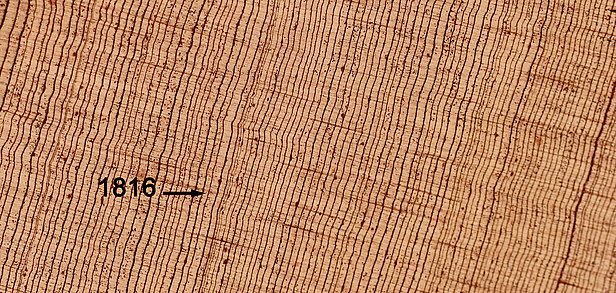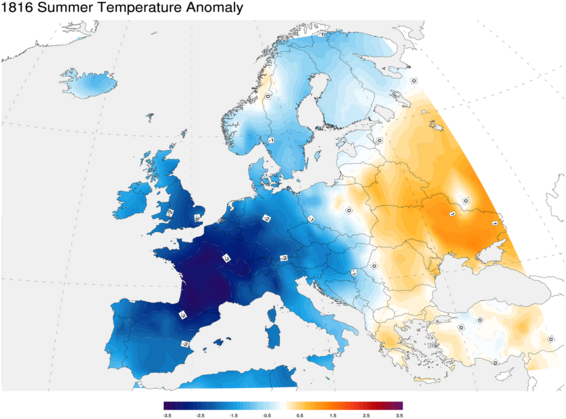Consequences of a volcanic eruption ¶
Dust and ash from the Indonesian volcano Tambora cooled the global climate for several years. In many places in the world, trees bear witness to this catastrophe through their narrow tree rings
After the eruption of the Indonesian volcano Tambora in April 1815, dust and ash spread through the atmosphere across the globe. Low temperatures and prolonged rainfall caused catastrophic crop failures in North America and parts of Europe in 1816 - the year without a summer - and in the following years.
Several other volcanoes erupted in tropical regions between 1808 and 1815. In addition, cooler temperatures prevailed due to low solar activity. Consequently, the summers from 1813 to 1816 were exceptionally cold in the Alps. This cooling of the climate also restricted tree growth in many places for several years.
In this larch, growth was reduced, but only partially and after a lag. In addition, 1821 was a larch budmoth year in this area, and this particular larch may have been infested, which could explain the particularly narrow tree ring in that year.
This example illustrates that local environmental factors sometimes overlap with the impact of a more global factor, here a volcanic eruption. However, it also shows that tree-ring researchers need many trees from the same location to draw reliable conclusions.

